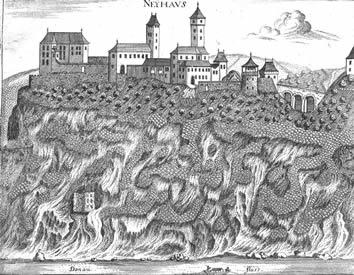Dominions
In the Mühlviertel, the part of Upper Austria where hamlet Hutstein is located, there had been several dominions which influenced our Hutsteiner forefathers’ history.
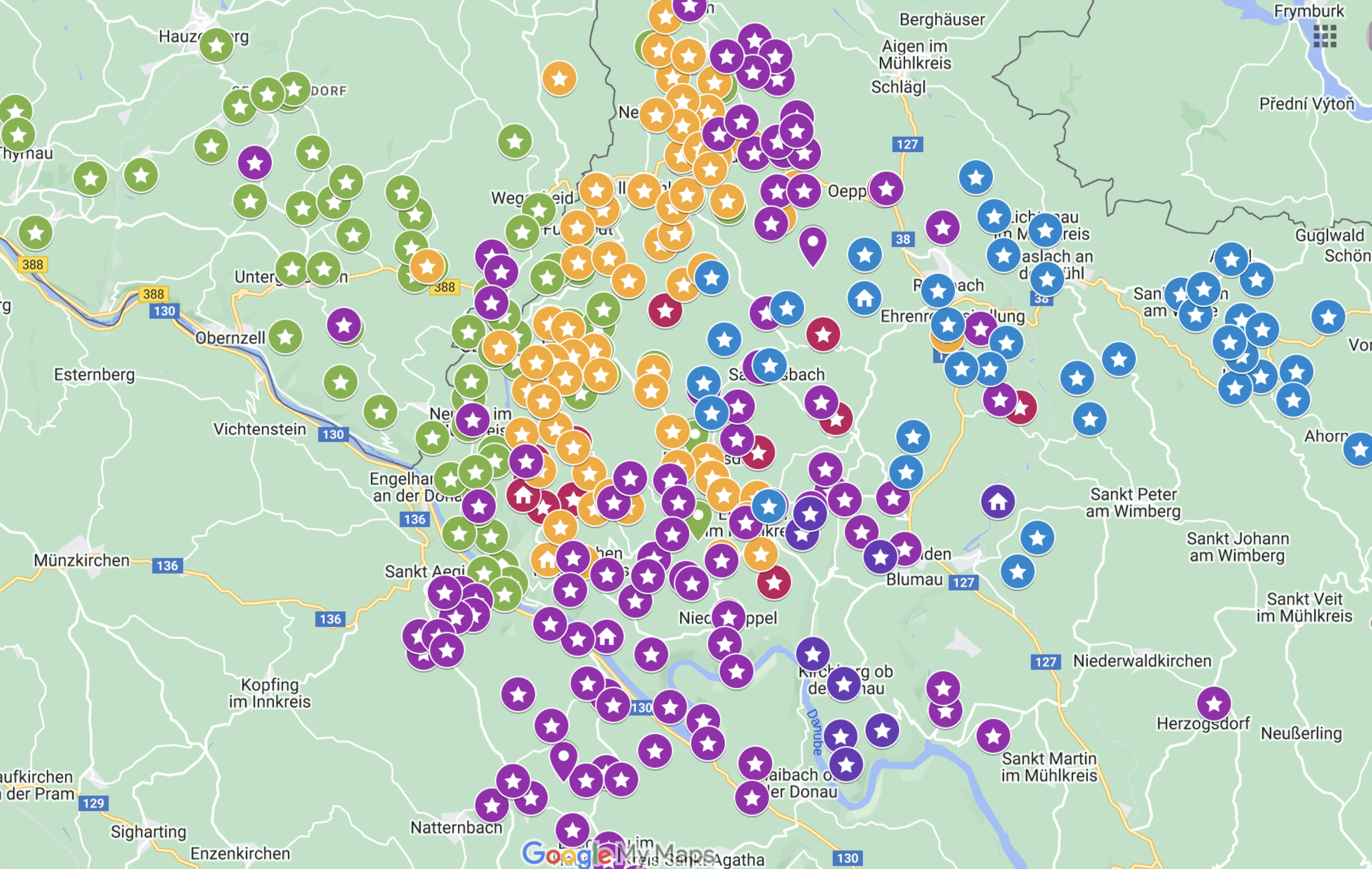
In the Mühlviertel, the part of Upper Austria where hamlet Hutstein is located, there had been several dominions which influenced our Hutsteiner forefathers’ history.
The most important ones had been:
Rannariedl
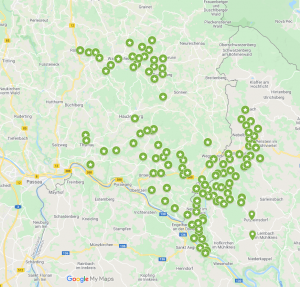
Rannariedl was built around 1240 as a fortification. It was a fief of the bishop of Passau. The reason for the construction was the possibility to control and tax the Danube at this point. The castle was inhabited by the Falkensteiners, who named themselves after the neighboring castle Falkenstein and were robber barons. In 1301 the Falkensteiners had to pawn the castle because they were in financial difficulties.
As already mentioned before our ancestors originated at Hutstein within the dominions of Rannariedl and Falkenstein. In 1620 the guardian of Falkenstein, Heinrich Salburger, bought the dominion Rannariedl, the dominion to which one of the two fiefs at the hamlet Hutstein was subjected to. So, Rannariedl and Falkenstein were united after 370 years again.
Tamel Huestainer was the first one in 1509 and a underling of dominion Rannariedl.
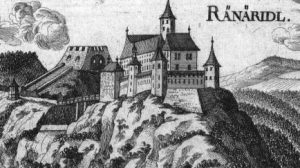
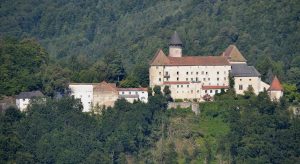
Known Hutsteiner underlings:
Tameln Hutsteiner, Stephan Hutsteiner, Bartholomaeus Hutsteiner
Falkenstein
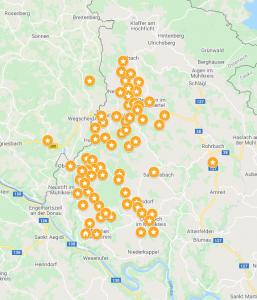
The castle was first mentioned in a document in 1140. Falkenstein was a large castle complex and an important aristocratic residence, which was the subject of fierce disputes in the Middle Ages. A historically significant personality from Falkenstein was Zawisch von Falkenstein († 1290). Schlägl Abbey and the district capital of Rohrbach were founded in Falkenstein.
Later, in 1537 Hanns became a Hutsteiner within the dominion Falkenstein
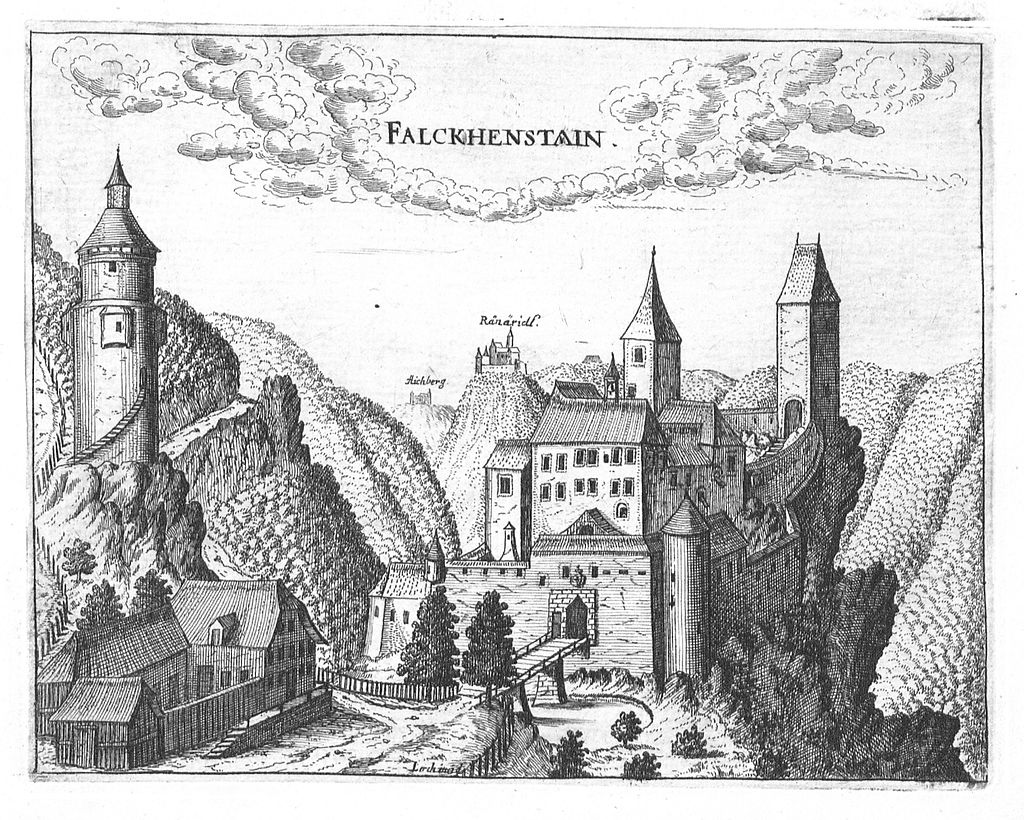

Known Hutsteiner underlings:
Hanns Hutsteiner, Pangraz Hutsteiner
Hochhaus
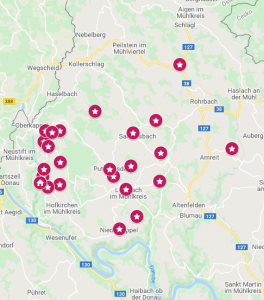
Hochhaus was the ancestral seat of the Hörleinspergers (Herleinspergers), who also temporarily lived in Weidenholz, Bruck and Niederwesen. Hans Hörleinsberger lived around 1391. Ulrich Hörleinsberger acquired the high-rise palace at the end of the 15th century. After the death of Christoph Hörleinsberger in 1664, Heinrich von Salburg bought it and combined the Hochhaus with Altenhof.
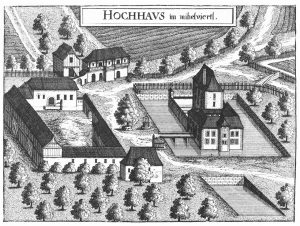
ALtenhof
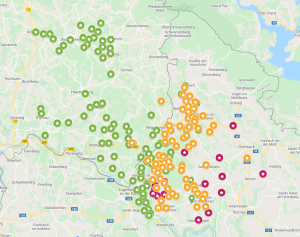
Altenhof Castle was first mentioned in a document in 1204. The owner at the time was Wernhardus de Altinhoven. Like Falkenstein Castle, Altenhofen belonged to the manorial family of the Falkensteins, a powerful dynasty that developed the area north of the Danube in the 13th century.
Falkenstein, Hochhaus and parts of Rannariedl united and the main castle moved to Altenhof, where the counts of Falkenstein settled from … , the castle of Falkenstein felt in ruins
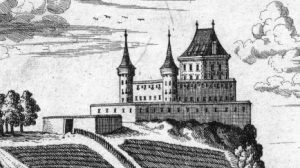
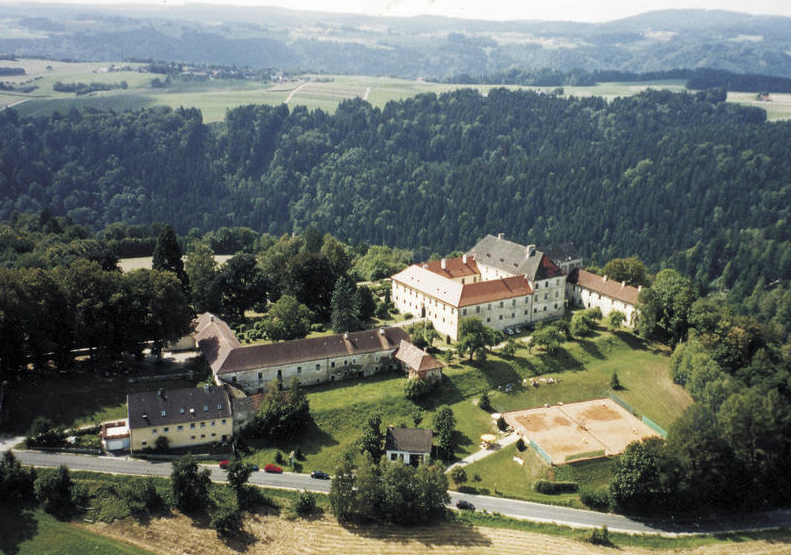
Known Hutsteiner underlings:
MArsbach
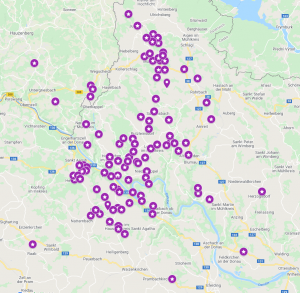
Marsbach Castle (castrum morspah) was owned by Passau and the Marsbachers, a branch of the Lords of Wesen who named themselves after the castle, were episcopal ministerials. They are derived from Wernhard von Wesen (ca. 1165-1190), who first named himself after Marsbach around 1170. In a Passau document from 1226, Otto von Marsbach is named as Ministeriale.
Until 1605 there was no evidence of any Hutsteiner recorded in the dominion of Marsbach.


Starhemberg
Starhemberg Castle, also known as Eferding Castle, is located in the centre of the Upper Austrian town of Eferding and, with the exception of a brief interruption between 1630 and 1660, has been owned by the princely Starhemberg family for around 450 years. In the Middle Ages, Eferding belonged to the dominion of the Passau bishops, who owned a manor house on the site of today’s castle in the 12th century.


Pürnstein
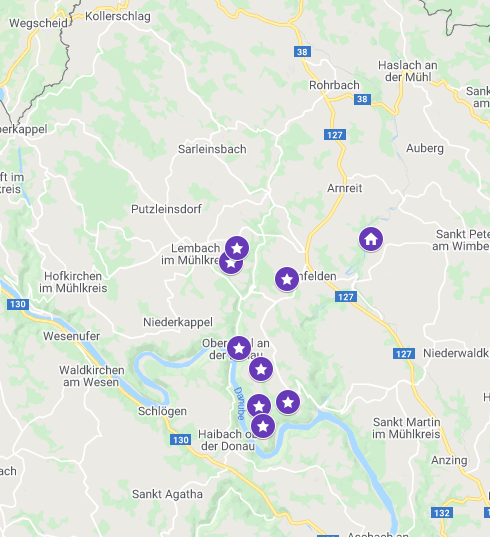
In 1010, a fortification was first mentioned as an episcopal castle of the Passau family. The first documented owner was Alram de Birchenstaine in 1170, a Blankenberge ministerial. In the 13th century the castle came into the possession of the Bishopric of Passau from the Rosenbergs.
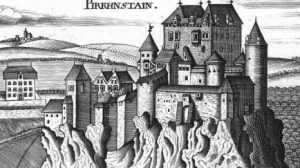
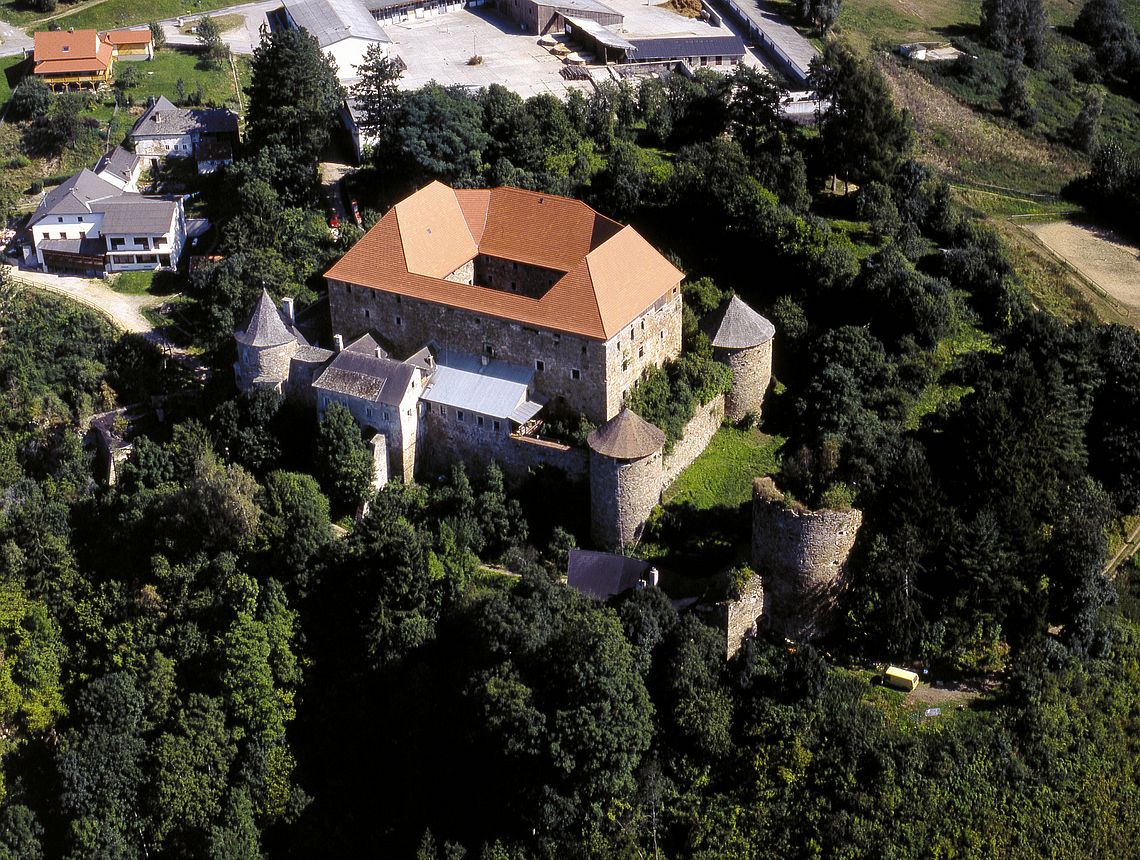
Sprinzenstein
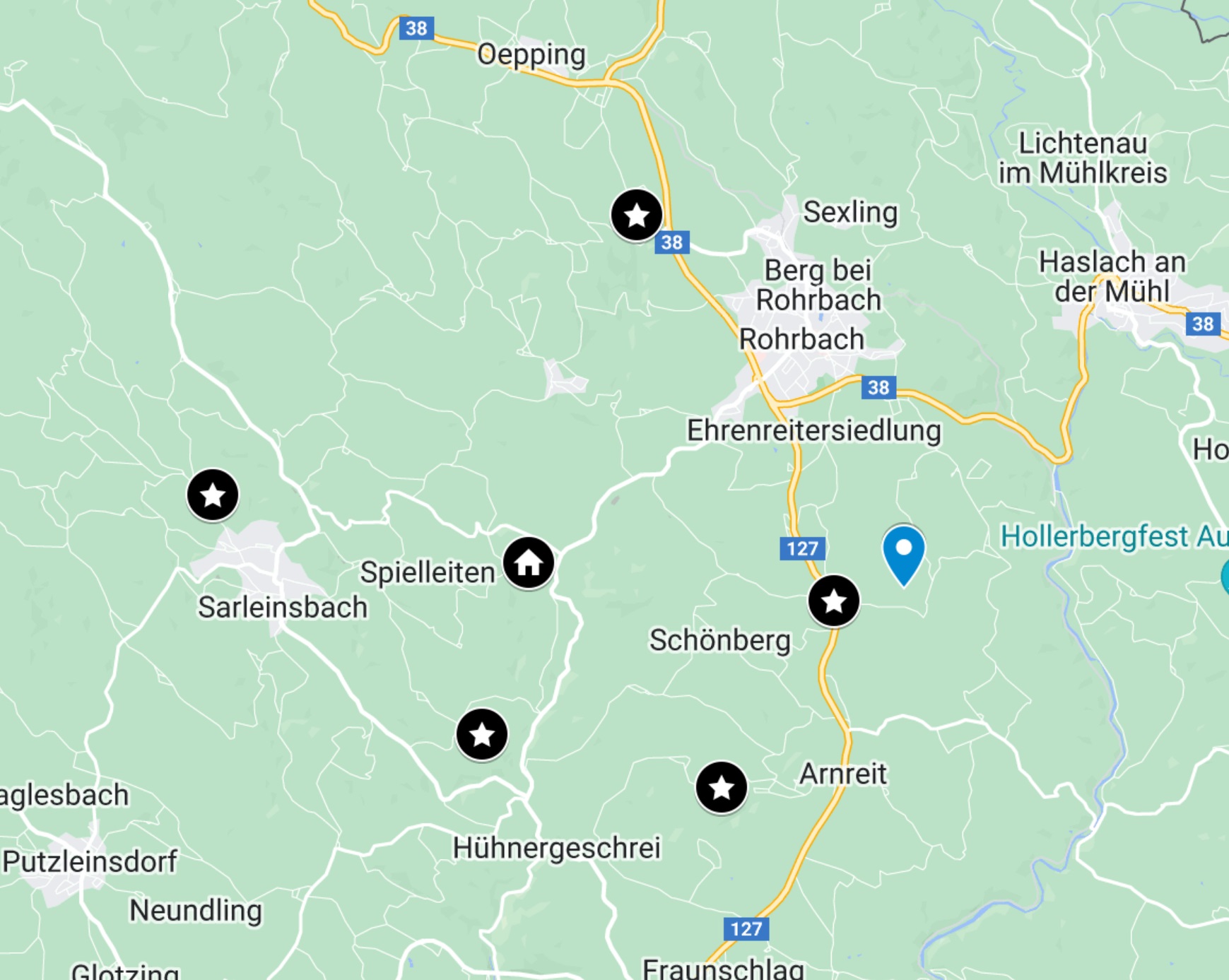
Sprinzenstein Castle can certainly be said to be the oldest part of this settlement, and this fortress on the east bank of the Kleine Mühl is dated between 1150 and 1200. The place and castle name Sprinzenstein comes from Middle High German “sprinze”, which means sparrow hawk.

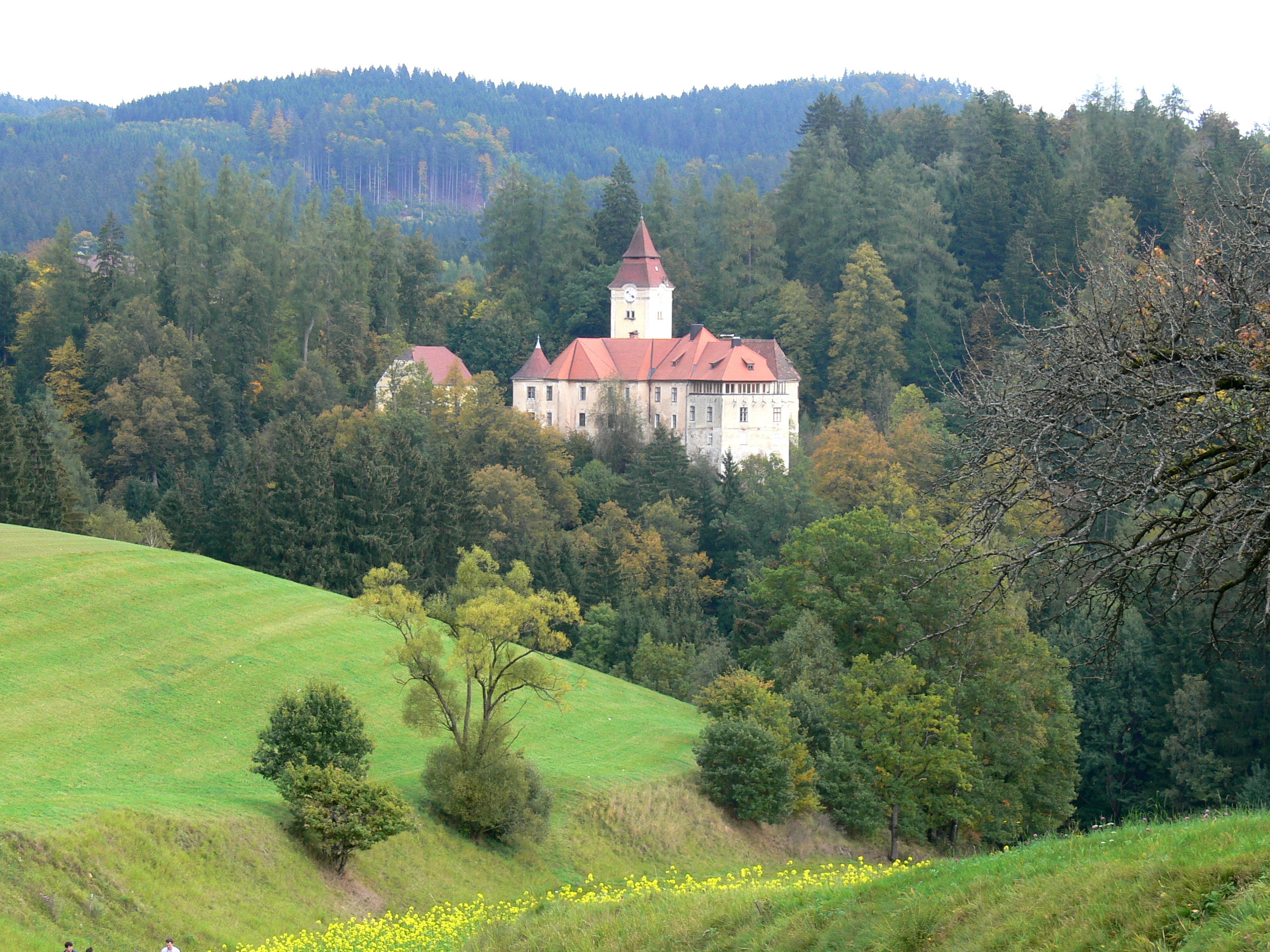
Passau / Wegscheid
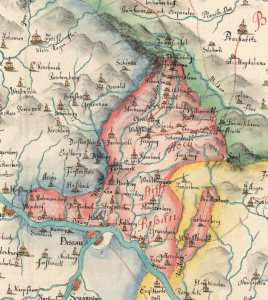
Wegscheid was founded on an important trade route from Passau to southern Bohemia. Wegisceda (1130) got its name from the three forks that start here. A parish probably already existed at that time.
On September 16, 1360, Bishop Gottfried of Passau raised the town to market status.
Our miller Lienhardt Huetstainer was an underling of the Pfleggericht Wegscheid, a part of the Abbey Passau
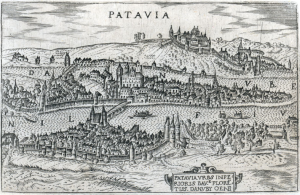

Known Hutsteiner underlings:
Lienhardt Hutsteiner, Simon Hutsteiner, Michael Hutsteiner, Joseph Hutsteiner, Martin Hutsteiner, Coloman Hutsteiner
Götzendorf
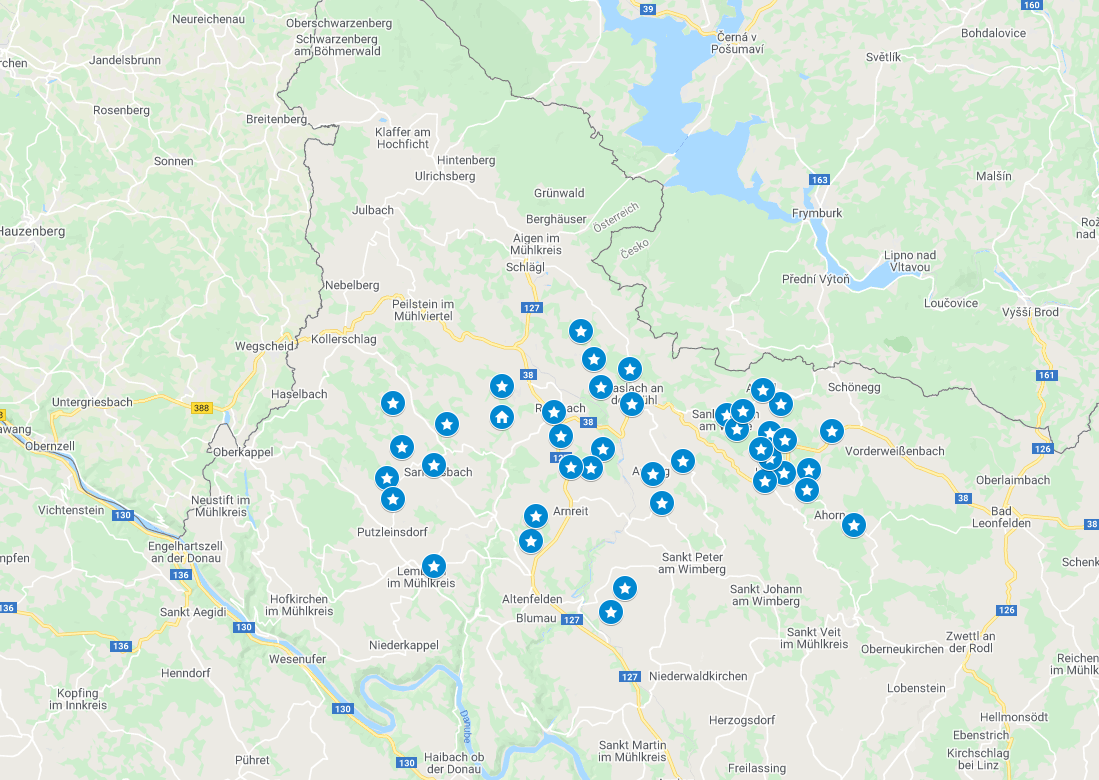
In 1180, Walter von Goczynesdorf (Götzendorf) is mentioned as a witness. The Götzendorfer family were ministerials of the Passau bishops and lords of the castle until they died out in 1422.
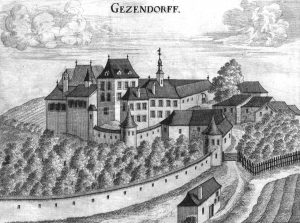

Known Hutsteiner underlings:
Ottensheim
Knight Otini – from whom Ottensheim may have got its name – had a castle built on the site of the Roman fortification. Oteneshaim was first mentioned in a document in 1148. From 1227 Ottensheim Castle was owned by the Babenbergs.


Known Hutsteiner underlings:
Lichtenau
It is believed that the castle was built around 1217 as a refuge and belonged to the Rosenbergs. It was first mentioned in a document in 1293, when the owner at the time, Sifrit der Hugenberger, died. Lichtenau was then a fiefdom of the Rosenbergs.
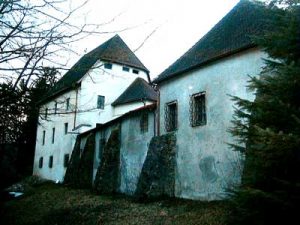
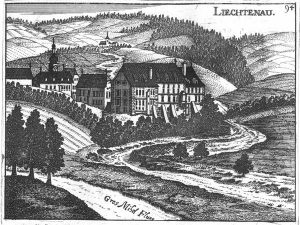
TanNberg
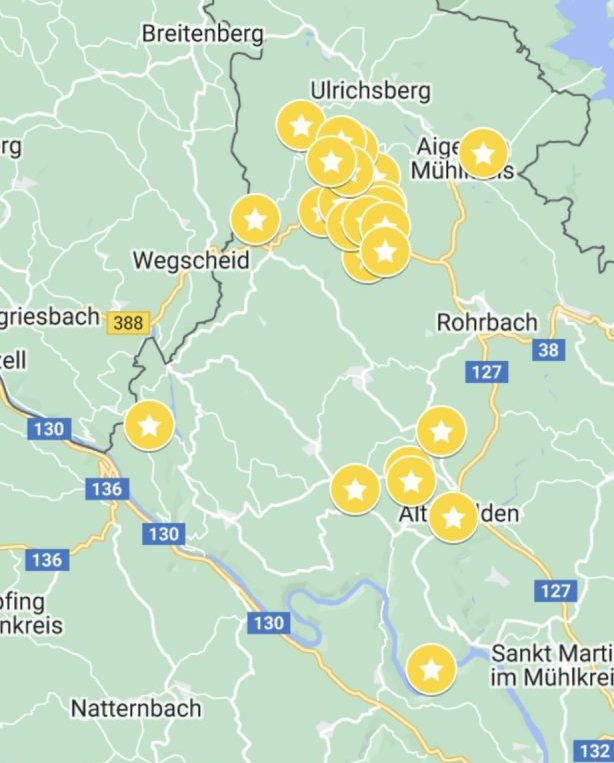
1327 Kunrad von Tannberg vowed to serve King Frederick “the Beautiful” († 1330) with his castle. In 1354, the last Tannberger living here († 1356) appointed his feudal lord, the Bishop of Passau, as heir to the castle and the rule of Tannberg. His brother Gundacker von Tannberg had already come into the fiefdom of Pürnstein in 1338. The bishops of Passau then had Tannberg administered by Pfleger (Alber von Jagenreuter, 1390; Heinrich der Mühlwanger, 1401) or pledged the castle when they were in financial difficulties, for example to Chunrad von Tannberg (1366–1374) or to Dankwart Herleinsperger ( 1430 and 1443). After the redemption, Passau used nurses again, said Achaz Premser. The last keeper at the castle was Wolf Herleinsperger in 1529.
In 1529 the administration of Tannberg, like that of the other possessions of the Passau diocese in the Mühlviertel, was relocated to Marsbach. The castle, which had now become dysfunctional, was left to decay. In the engraving by Georg Matthäus Vischer from 1674, Tannberg is already in ruins, although the two deep ditches that protected the castle from the land side can still be seen.
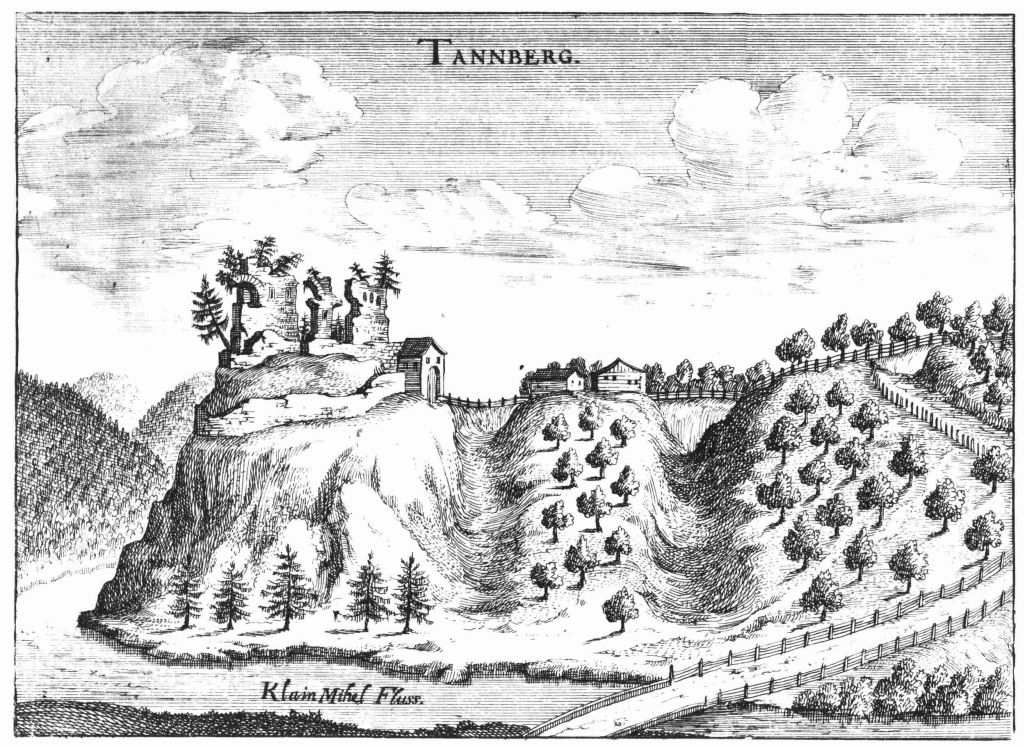
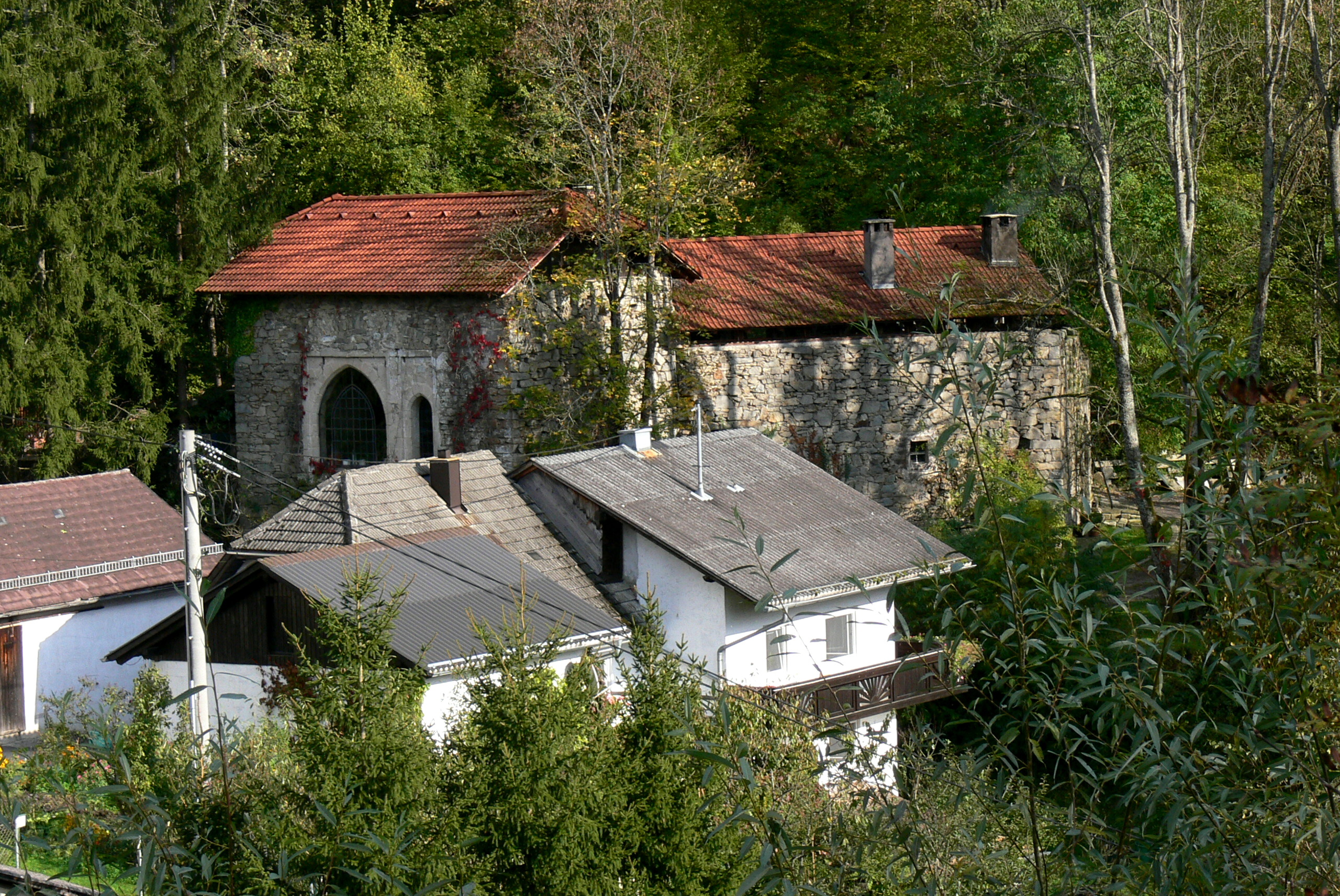
Neuhaus
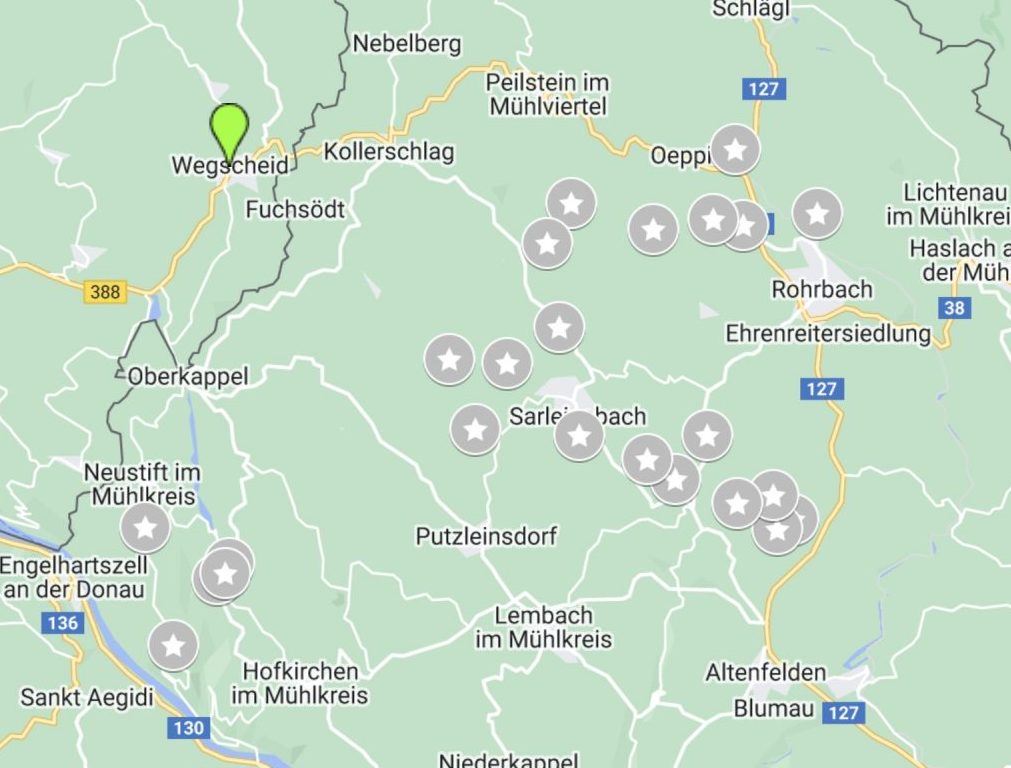
The noble family of the Lords of Neuhaus (also Lords of Hradec; Czech Páni z Hradce, Latin de Novo Domo) came from the South Bohemian dynasty of the Witigonen, whose first representative was Witiko von Prčice († 1194). His eldest son Heinrich founded a castle before 1220, which was called “Novum castrum”, while the town around the castle was known as “Nova domus” in 1223, “Gradecz” in 1255 and “Newenhaus” in 1265 “ is documented.

